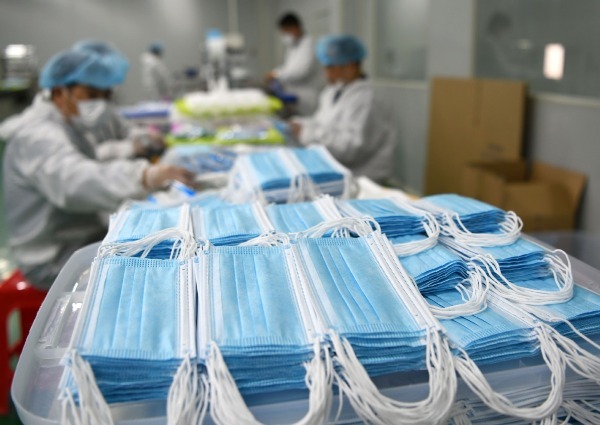
Рабочие изготавливают медицинские защитные маски на заводе в Наньчане., Провинция Цзянси. [Фото Ху Гуолиня/For China Daily]
Видео, утверждая, что в процессе стерилизации масок на продуктах остаются канцерогены., вызвало обеспокоенность среди широкой общественности на прошлой неделе. Так, что именно происходит во время производства масок? Действительно ли это повод для беспокойства?
1. Что используется для стерилизации масок?
Медицинский маски стерилизованы различными способами, в том числе с радиацией, этиленоксид, пара и другие методы.
Большинство медицинских и N95 масок, доступных на рынке, стерилизованы этиленом оксидом (Расстановка). Это важный метод стерилизации, который производители широко используют для обеспечения безопасности медицинских устройств.
2. Может ли остаток оксида этилена на масках вызывать немедленные/острые воздействия на здоровье?
Только долгосрочное и профессиональное воздействие ETO было связано с раком в научных исследованиях.
Для крупных производителей, которые следуют стандартам и руководящих принципам производства, Уровень остаточного ETO, оставленного на маске после того, как он подвергся стерилизации ETO в безопасных пределах.
3. Как долго этилен оксид остается в организме?
ETO довольно быстро удаляется из тела - с уровнями примерно 50 процент каждый 42 минут. При такой скорости, почти 90 Процент ETO ушел из тела через два часа.
4. Необходимо ли встряхнуть маску, прежде чем носить ее?
Нет необходимости встряхнуть маску, прежде чем носить ее.
Встряхивание масок или сушка их под солнцем, прежде чем их использовать, является личным выбором. Эти действия обычно не препятствуют защитному эффекту маски.
Медицинские сотрудники не встряхивают свои маски, потому что маска стерильной, когда вынимают из пакета. Узнательно встряхивая и разоблачение его в воздухе может вызвать непреднамеренное загрязнение в таких местах, как больницы.
5. Какова научная рекомендация для ношения маски?
– Люди не в среде высокого риска, например, в прямом контакте с пациентами с респираторными заболеваниями, как правило, не нужно носить маски N95.
– В местах, где может присутствовать вирус, например, больницы, Закрытые комнаты, и области среднего риска, Носить медицинскую маску достаточно.
– Рекомендуется ежедневно менять маски.
– Когда не носить маску, Люди могут повесить маску или помочь сохранить ее с помощью чистого бумажного полотенца.
– Для предотвращения респираторных и пищеварительных заболеваний, носить маски одни недостаточно. Люди должны обращать внимание на гигиену рук и часто мыть руки.
6. Маски, сделанные меньшими производителями, соответствуют стандартам безопасности на уровне этилена.?
Затраты на стерилизационные устройства ETO высоки, Таким образом, меньшие производители обычно используют другие методы стерилизации.
Для плохо сделанных масок, Гигиена продукта представляет больше проблем со здоровьем, чем уровень ETO, он может содержать.
Источник: Chinadaily

















